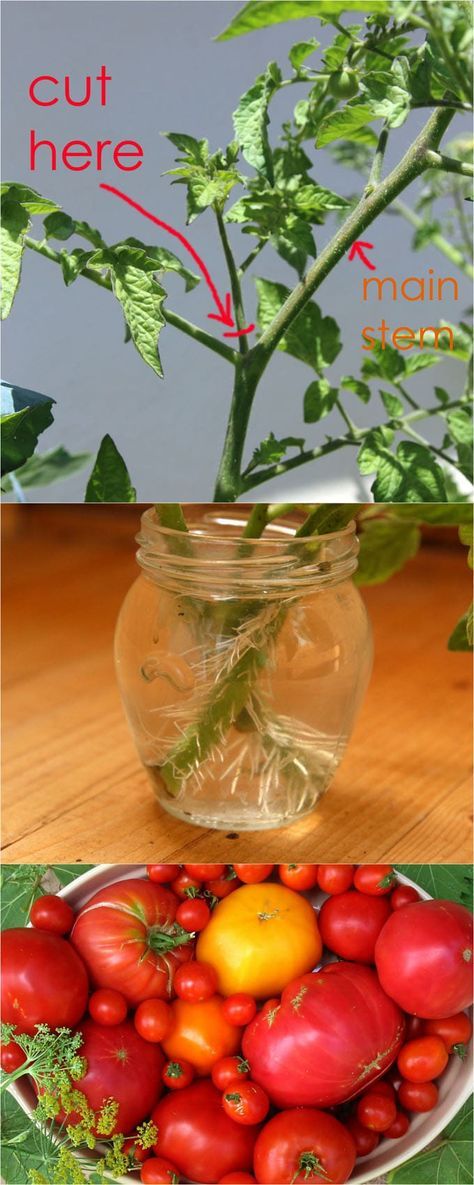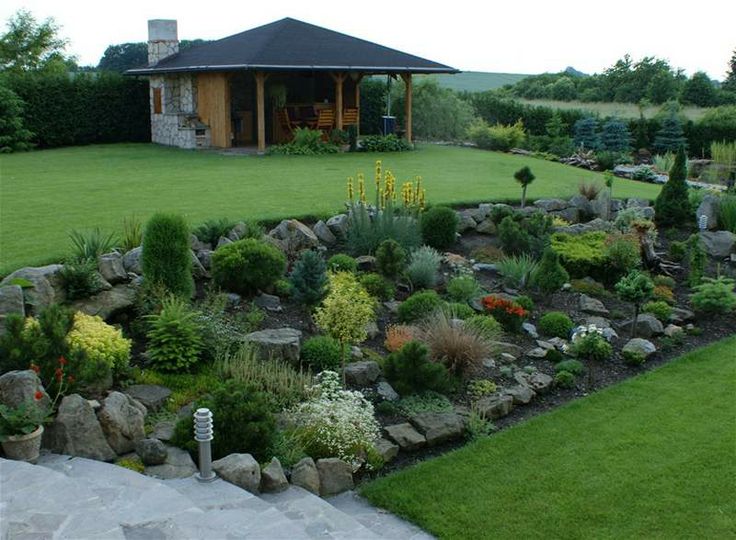What to plant for the winter
9 Vegetables To Plant in Winter
For much of the U.S., there's no need to shut down the garden once winter rolls in. Here's what to plant based on where you live.
1 / 10
AMANDA JACKSON/Getty Images
Planting Winter Vegetables
In nature, some wild seeds lay dormant over winter before germinating at the first signs of spring. While abiding this natural process is an age-old gardening practice, it wasn’t until 2006 when the United States Department of Agriculture (USDA) officially recognized it by adding “winter sowing” into its National Agriculture Library Thesaurus.
Its newfound popularity happened thanks to a novice gardener, Trudi Davidoff. She discovered if she used containers as mini outside greenhouses, she could mimic wild seed growth in nature. The technique has grown in popularity, partly because winter sowing gives cool-season vegetables a head start for the spring harvest. Some seeds even germinate at a higher rate when sown in winter. Try these mini vegetable plants in your garden this year.
“Certain vegetables even perform and taste better when grown in cool weather, rather than the heat of summer,” says Kelly Funk, a vegetable garden expert and president of Park Seed.
Can I Plant a Winter Garden Where I Live?
Yes. But you might benefit from planting in containers vs. directly sowing seeds into the ground.
The lowest temperature in your USDA Plant Hardiness Zone determines what you can grow. If you live in Zones 8 through 11, you can plant certain vegetables in the winter without changing your gardening habits.
“The mild winters of USDA Zones 8 through 11 are best for winter planting,” says Funk. “These regions have hot summers where the heat can cause more harm than good.”
States that fall primarily within these zones include Florida, Texas, Arizona, Hawaii, California, Mississippi, Alabama, Georgia and the Carolinas, plus the west coasts of Oregon and Washington.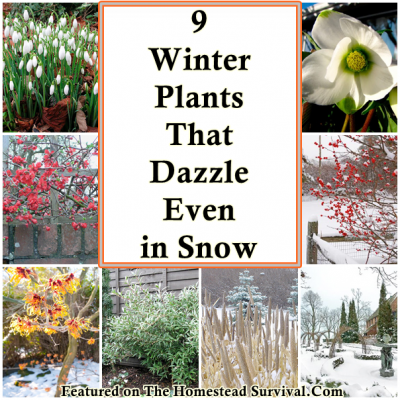
Cold-hardy vegetable seeds can also survive the freezing temperatures of more Northern climates. There, seeds can be sown directly into the ground, although some gardeners start them in a more protected environment like a container on the porch.
How Should I Plant for Winter?
You can direct-sow seed into garden beds or start your seeds in containers.
Direct sowing is the simplest method, but your seeds are likely to germinate later because the soil will take longer to warm up in the spring. That’s why many gardeners opt for starting seeds in DIY containers made from plastic gallon jugs or food take-out containers, then transplanting them in the spring.
When Should I Plant for Winter?
When direct sowing, you can plant seeds anytime, as long as the ground has thawed enough to work the seeds into the soil. The seeds will remain dormant until the soil temperature is right for them to sprout in the spring. In warmer climates, this is advantageous with crops like leafy greens, which tend to bolt once the weather gets too warm.
For containers, in cold climates it’s best to plant after the winter solstice, in January or early February. This way they’ll still have plenty of time to mimic natural germination conditions. In more mild places, seeds suited to those climates won’t require a frost, so your timing can be more flexible.
Below are some of the best cool-weather crops.
2 / 10
Cavan Images/Getty Images
Spinach
Spinach, mustard greens and kale are ultra-hardy greens. Kale actually gets more tender when it’s cold. Sow them in the winter for a spring harvest. In moderate climates, you can sow them in the fall for winter harvest as well.
3 / 10
Vincent Ryan/Getty Images
Swiss Chard
Most greens prefer cool weather, making them excellent choices for winter gardens. Chard is a semi-hardy plant, along with collard greens, arugula, bok choy, endive, mizuna and radicchio.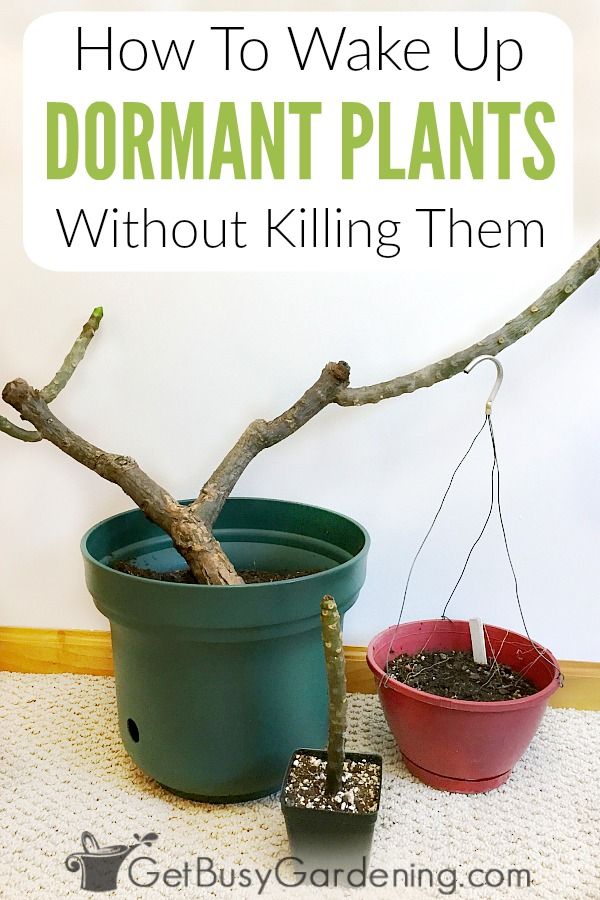 All can be direct sown or started in containers, except bok choy, which is most successful when transplanted.
All can be direct sown or started in containers, except bok choy, which is most successful when transplanted.
When collards are planted and grow over the winter, it improves the flavor of the leaves.
4 / 10
Baloncici/Getty Images
Carrots
Carrots, along with turnips and beets, actually get sweeter when grown in the winter because the plants produce more sugars to keep from freezing. Keep the soil sandy and well-drained, because heavy soil will cause carrots to grow slowly. All can be started with direct seeding.
5 / 10
Ivan/Getty Images
Radishes
Radishes are a fun cold crop because they’re low-maintenance and grow fast. Specific varieties grow in winter, like daikons, which grow more slowly but come out nice and crisp. Sow them directly into sandy, well-drained soil outside.
6 / 10
Bennian/Getty Images
Peas
Peas do well when it’s chilly and help improve the soil by fixing nitrogen.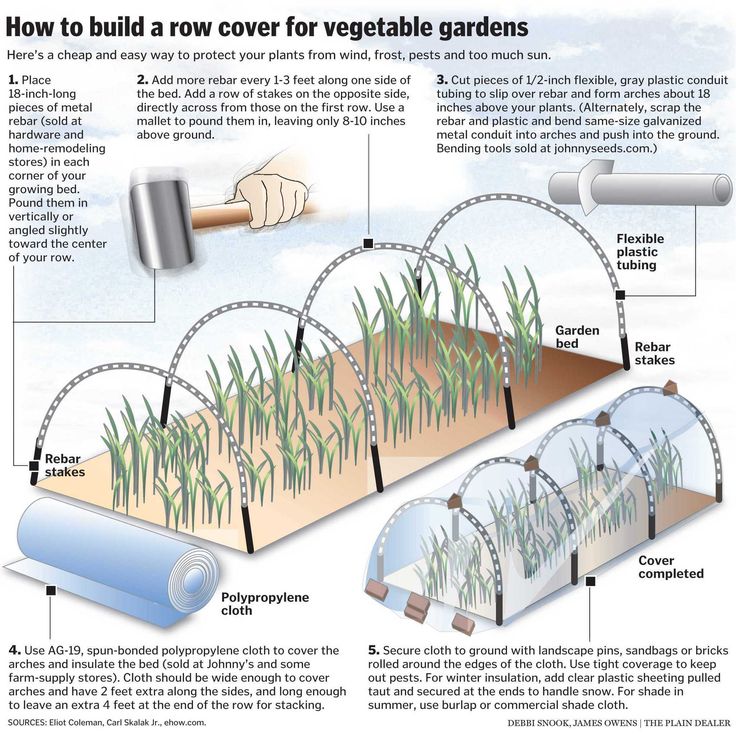 They require full sun and well-drained soil. They don’t need a lot of fertilizer, but will benefit from some compost added to the soil before planting. Sow them outside in late winter and make sure they have a trellis or something else to climb on.
They require full sun and well-drained soil. They don’t need a lot of fertilizer, but will benefit from some compost added to the soil before planting. Sow them outside in late winter and make sure they have a trellis or something else to climb on.
7 / 10
SingerGM/Getty Images
Broccoli
As with radishes, there are winter varieties of broccoli, like hardy purple sprouting broccoli. Sow in containers over winter, then transplant in the spring. Broccoli prefers full, direct sunlight for about six to eight hours a day. While it needs regular watering, it doesn’t do well in overly wet soil.
8 / 10
Vivian Lo/Getty Images
Bunching Onions
Because they grow quickly and tolerate many conditions, bunching onions like scallions are excellent winter sowing crops. They can be sown directly into the beds for early spring harvest, or sown and grown in containers for winter harvest.
9 / 10
Lulú De Panbehchi/Getty Images
Leeks
Leeks develop bolder flavor after a frost or two. Sow them in containers and then transplant in the spring. They’re also good for early summer planting. They’re hardy and can sit in the ground over the winter, waiting to be picked for a winter soup, or to poke up through the snow on a spring day. You can also try growing elephant garlic—a cross between garlic and a leek.
10 / 10
yujie chen/Getty Images
Cabbage
The most weatherproof winter cabbage is crinkly savoy, which actually gets brighter once it goes through a frost. They take a while to grow, so start them in containers and transplant them once they have six or so leaves.
Originally Published: February 04, 2022
Karuna Eberl
A freelance writer and indie film producer, Karuna Eberl covers the outdoors and nature side of DIY, exploring wildlife, green living, travel and gardening for Family Handyman.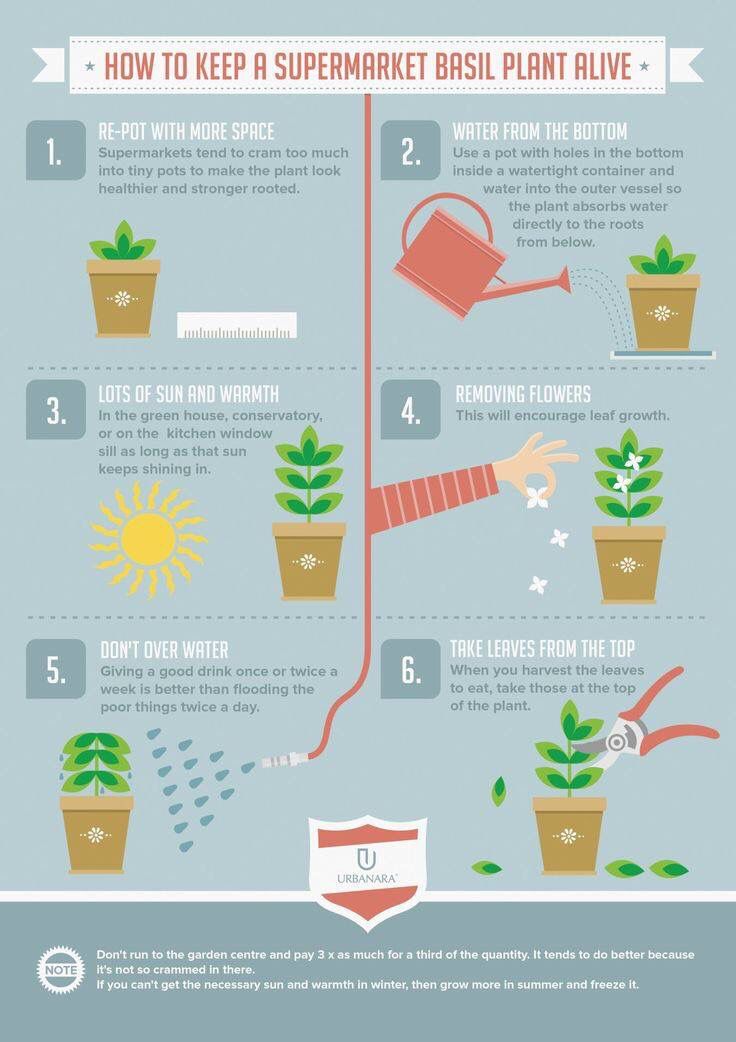 She also writes FH’s Eleven Percent column, about dynamic women in the construction workforce. Some of her other credits include the March cover of Readers Digest, National Parks, National Geographic Channel and Atlas Obscura. Karuna and her husband are also on the final stretch of renovating an abandoned house in a near-ghost town in rural Colorado. When they’re not working, you can find them hiking and traveling the backroads, camping in their self-converted van.
She also writes FH’s Eleven Percent column, about dynamic women in the construction workforce. Some of her other credits include the March cover of Readers Digest, National Parks, National Geographic Channel and Atlas Obscura. Karuna and her husband are also on the final stretch of renovating an abandoned house in a near-ghost town in rural Colorado. When they’re not working, you can find them hiking and traveling the backroads, camping in their self-converted van.
What To Grow In Winter
Wondering what to grow in winter or if you can even plant anything at all in this cold season? Here are 45 amazing and frost defiant plants to inspire your winter garden.
21 Beautiful Backyard Landscaping I...
Please enable JavaScript
21 Beautiful Backyard Landscaping Ideas On A Budget
RELATED: Container Gardening Tips For The Winter Season
In this article:
- Winter Gardening
- Winter Flower Garden
- Winter Landscape
- Vegetable Garden
- Herb Garden
The thought of frost and the falling snow is enough to make you cringe and seek the comfort of a warm blanket or the fireplace. While we think a lot of plants do too when winter comes, you’ll be surprised how some garden plants can actually defy the odds.
While we think a lot of plants do too when winter comes, you’ll be surprised how some garden plants can actually defy the odds.
Winter gardening doesn’t mean literally planting things in the snow. It’s more of having an idea of what to grow in winter so you can consider some plant additions to your garden soon.
While the snow season is usually a sign to give up all garden plans, it doesn’t have to be dull. I searched the web for something to grow indoors this winter and I found a lot of amazing plants that are almost as resilient in the cold season as they are in the warmer months.
Even in the seemingly bitter white snowy landscape, they stand out looking even more vibrant. Of course, I couldn’t help sharing this list with you.
Winter Flower GardenFind out what to grow in winter for your flower garden in this list of lovely blossoms. Enjoy colorful foliage when such a delight is scant in the cold winter season.
1. Violas
|
Take it from the alpine mountains where these flowers bloom gloriously even in the freezing temperatures.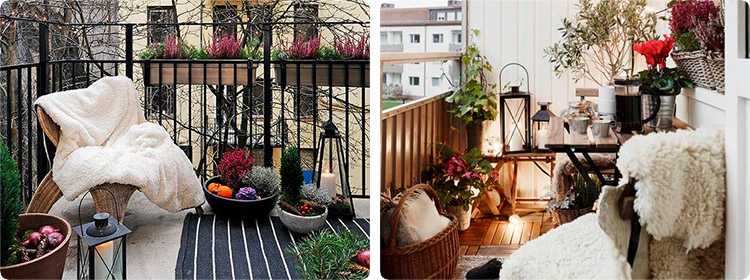 They keep flowering too, giving you a constantly blooming garden even in winter.
They keep flowering too, giving you a constantly blooming garden even in winter.
Although these dainty flowers thrive through the snow, they like an area where there’s full sunshine.
Grow violets in clusters along pathways for a lovely effect. Mixing in other colors would be lovelier.
2. Camelia
|
The camelia or camelia japonica is almost synonymous with the cold winter season. This evergreen shrub thrives even in winter when few plants do, giving life to a bare garden.
Camelia is also a shade plant growing well in acidic soil. Watering these plants with rainwater would be ideal.
3. Crocuses
|
Few plants can stand up to the freezing snow like the crocuses. They defy the bleak landscape of winter and pop up through the white snow, brightening up a dreary garden.
Don’t miss out on this chance of an all-season garden.
Grow crocuses in October or November for some late winter or early spring blooms. Growing them in clusters would be ideal for more impact.
4. Winter Hardy Roses
|
Depending on the variety of rose, these lovely flowers thrive and bloom beyond the growing season. The antique tea roses and old roses are among the varieties that can bloom until winter and even for generations. Find out more about growing roses here.
5. Snow Drops
|
How else are these dainty white flowers named besides for their snow-white color? It’s really for their ability to seemingly thrive in the snow. They love the snow so much so forget about growing these plants in the warm south. Snowdrops are a shade loving plant too, so you can add life and color to a shady spot in your garden.
6. Primroses
|
You’ll find these well-loved classical flowers common in cottage gardens and for very good reasons. The flowers are just lovely in form and in their variety of colors.
They’re hardy too and pretty long-enduring — some may even last for a generation in a garden.
7. Dogwood Flowers
|
Although the Dogwood or Cornus Florida is a flowering tree, I just couldn’t help listing it under the flowers. This is simply for their beautiful blooms especially in the winter, when most of their leaves have fallen.
This is simply for their beautiful blooms especially in the winter, when most of their leaves have fallen.
You will find the lovely pink flowers against the white snow really stunning.
8. Heather
|
Depending on the variety of heather and the hardiness zone in your area, they can bloom all winter long. Give this plant a time to establish and you’ll find them blooming all through winter against the frost.
Give your heather plant a trim in the summer to keep it healthy.
9. Hellebore
|
As this evergreen perennial plant thrives and blooms through winter it is also called a Christmas rose. They are a low-lying shade loving plant, making them perfect under trees or in shrubs.
Make this an addition to your garden and give your garden signs of life with these delightful blooms.
10. Winter-Flowering Irises
|
The iris is a great flower for the flower gardening beginners. They grow about wildly or even without maintenance.
They thrive when neglected, sometimes even giving more blooms. Watch this stunning flower bloom even with the falling snow.
Winter LandscapeMost of the cold-hardy and winter enduring plants are shrubs and trees. While some may not agree, the cold season is the best time to grow trees and shrubs.
This will give them time to become established and survive the heat in the summer.
11. Holly
|
Few plants symbolize winter or Christmas specifically like the holly. The glossy green leaves and round red berries are classic Christmas colors through and through.
You’ll find these interesting plants in Christmas wreaths and winter decorations.
12. Red Twig Dogwood
|
Wouldn’t the red twigs against the white snow get your attention during the winter? For this reason, the Red Twig Dogwood is a great landscaping plant even beyond the season.
They are also a staple in winter or Christmas decorations
13.
|
Just like holly, the Firethorn has glossy leaves and bears red berries often in large clusters making them a great ornamental plant for your garden.
Want to invite birds over? Then grow the Firethorn whose berries are a food source for birds while the flowers invite the bees during the summer.
14. Corkscrew Hazel
|
The Corkscrew Hazel is a curious plant with twisted twigs, earning it the moniker of twisted hazelnut tree or the contorted filbert tree. This is a great plant in the cool fall and winter season, especially for Halloween decorations. They also make great container plants.
15. Grevillea Victoriae
|
This shrub plant is great for hedges and shields for creating privacy in your yard. Since they originated from the mountains, they can withstand the harsh winter weather.
They have interesting crimson flowers as added bonus.
16. Agave
|
It’s amazing how these desert plants withstand not only the heat and drought and but the bitter cold as well. Their silver pointy leaves make great front yard landscaping plants for a modern garden landscape.
They are easy to grow and maintain and are practically impossible to kill.
17. Sarcococca Confusa
|
Grow this reliable ornamental shrub, so beautiful it earned the Royal Horticultural Society‘s Award of Garden Merit. This evergreen plant boasts glossy elliptical leaves with white honey-scented flowers blooming in the winter season.
Keep your garden interesting even in midwinter with these types of frost enduring plants.
18. Skimmia Japonica
|
Just like the Sarcococca Confusa, this plant is a Royal Horticultural Society Garden Merit awardee as well. And pretty well-deserved too as these are such weather-resistant plants.
The Skimmia Japonica defy the harshest of weathers, from drought to the bitter cold. They’ve got glossy and leathery leaves and sweet-smelling flowers.
19. Mahonia
|
Mahonia is another evergreen shrub with origins in the mountains, which accounts for its cold hardiness and frost resistance. They offer interesting foliage that blooms all winter long, making it a favorite for garden landscapes.
It’s got edible blue or black berries that are rich in vitamin C, but has undesirable effects when consumed in large quantities.
20. Daphne
|
When a plant has legendary stories behind it, then it must be amazing. The Daphne plant is widely known for its scented flowers and poisonous berries.
Being a cold- and drought-tolerant plant, the Daphne is great for rock gardens and as a winter garden ornamental plant. They also do well in pots too, if your space is not big enough to accommodate a plant bed.
21. Juniper
|
The juniper is a coniferous evergreen known to withstand the harsh winter weather. It’s got interesting foliage and color too, which gives a landscape variety in form and color.
And by color, I mean its cool blue hue which intensifies in the winter. It can definitely give your garden some much-needed contrast.
22. Poinsettia
|
Although the poinsettia is a plant more widely used for Christmas decoration, it is actually a tropical and a subtropical plant. The famous red foliage is very vibrant and prominent during the winter season.
However, you can keep these plants in temperate regions in containers indoors. You can display them outdoors as long as they are kept frost-free to keep from burning and withering.
23. Cyclamen
|
Light up your garden with lavender and rose-pink brilliance in the cold season. Cyclamen is easy to grow and surprisingly vigorous despite its delicate appearance.
Plant cyclamen where its bright flowers can cover the ground and bathe under the winter sun. It’s nice to see them flourish underneath deciduous trees.
RELATED: 7 Exciting Ways In Preserving Flowers For Winter Delight
Vegetable GardenGrowing vegetables are mostly done in the spring or summer but there are a few exceptions that thrive in the cold season. Check what to grow in winter in your vegetable garden.
24. Brussels Sprouts
|
Brussels sprouts have a slightly bitter taste which kids and some adults dislike. But overwintering can improve its flavor, making it perfect for winter vegetable gardening.
Learn more about how to grow Brussels sprouts here.
25. Collard Greens
|
Keep your dinner tables well supplied with healthy fresh greens with collard greens. Just like its relatives kale and the cabbages from the brassica family, they prefer cold temperatures.
26. Kale
|
Kale has tough-looking dark green foliage and you know by its color how vibrant and healthy it is. It’s one of the healthier greens packed with vitamins and minerals.
But other varieties can have interesting colors, making them great for an edible landscape in the fall and winter.
27. Chinese Cabbage
|
Have you tried Korean kimchi before? This cabbage variety also called the Napa cabbage is the main ingredient of this Asian dish.
It has a sweeter taste compared to the ordinary cabbage variety and looks more like romaine lettuce.
28. Beet
|
The health benefits of beet are undeniable, making them a preferable addition to your garden. They grow fast too with both greens and roots edible.
Find out more about growing beets here.
29. Ornamental Cabbages
|
Although the ornamental cabbages are edible, they tend to have a bitter taste. Good thing they are adorable to look at, making them perfect for some fall or winter decoration.
They make a great addition to your edible landscape too.
30. Broccoli
|
It’s no secret broccoli is a cold-hardy vegetable, but they can overwinter too. Broccoli has a long growing season but there are short growing season varieties too, so make sure you know which one you have.
Find out more about growing broccoli and its varieties here.
31. Kohlrabi
|
Kohlrabi is another cold-hardy vegetable that grows in fall through to winter. It’s a tasty vegetable with edible leaves.
This plant is an early spring vegetable too.
32. Cabbages
|
Another more prominent member of the brassica family, but cabbages can overwinter too.
Got lots of cabbage to harvest this winter? Then preserve them in a cole slaw recipe canning idea. Find out more about growing cabbages here.
33. Carrots
|
An interesting fact about carrots is that they taste better grown in winter than the ones grown in summer or spring. A cold frame greenhouse is perfect for carrots.
It fits well whether you grow it on a pot or on the greenhouse bed. Simply plan ahead of time without the need for costly gardening facilities.
34. Mustard Greens
|
For those who want a delicious and healthy green harvest, this spicy green is easy to grow. This vegetable is rich in vitamins K, C, and A.
While some vegetable cultivators are not familiar with it, these plants do well in the cold season. Mustard greens gardening can either be done from seed or seedlings.
35. Asparagus
|
Asparagus is a low maintenance crop, especially when it’s well taken care of and already stable. It’s resilient and can easily adjust to different types of environment.
Although, it is necessary to prep the asparagus bed in the colder regions to ready it for the succeeding growth phase. This plant is capable of producing up to 15 years after the early growing season.
36. Peas
|
One of the primary crops to grow as soon as the soil can be cultivated are peas. Apart from being easy to grow, the good thing about peas is it’s a remarkable companion plant.
It has a limited growing season but it leaves nitrogen in the soil, allowing other plants to thrive in the area.
37. Spinach
|
Growing spinach in a container is a good idea so you can reap all those dark leafy greens before pests get the best of your harvest. Spinach is fast-growing and loaded with nutrients so you definitely want this on your list of vegetables to grow in a pot come winter.
Limited garden space will not be a hindrance to growing Popeye’s favorite food.
38. Garlic
|
For centuries, garlic has been used for medicinal and culinary reasons. You find them in grocery stores with the same variety most of the time, but there are so many types of garlic available, each with their own unique flavor.
You can plant them as soon as fall starts, through the cold season, then harvest the crops in the summer.
39. Onions
|
There is a wide range of onions that come in different sizes, colors, and shapes. Onion crops are easy to grow, with most gardeners preferring to plant them in fall.
You can try growing them from seeds, sets, or transplants. They’re a reliable crop to grow even in the winter season.
Herb GardenSome evergreen herbs can survive the frost of winter. However, if you’re not too sure, you can grow herbs indoors instead.
Know what to grow in winter for your herb garden.
40. Chives
|
Like most alliums which are grown from bulbs, these perennial herbs regrow in the spring. However, like these chives, they push their limits by growing through to the frost.
41. Rosemary
|
Rosemary grows even in mountainous and rocky places. They survive both ends of weather extremes — the drought and frost.
Learn how to propagate rosemary this early winter to early spring.
42. Thyme
|
Your dishes for the winter holidays will definitely need some thyme for their exquisite flavor. As thyme is an evergreen herb you will have a little problem with supplies over winter.
43. Oregano
|
Keep your newly-planted oregano indoors when growing them through winter. Once they are well-established they can be left outdoors in your herb garden.
44. Bay Leaf
|
This aromatic evergreen tree is native to the Mediterranean and is obviously cold hardy. The tough leaves, although used in cooking, are not meant to be eaten.
45. Lavender
|
A well-established lavender plant will survive the winter even when blanketed in snow. Grow the lovable lavender in your winter garden for life.
Watch this video from OneYardRevolution | Frugal & Sustainable Organic Gardening for more winter gardening ideas:
Knowing what to grow in winter will help your garden keep its vibrancy even in the snow. Give the flowers, herbs, and ornamental plants time to be well established before exposing them to the bitter cold.
Better yet, make a thorough study of the plants you chose. Depending on your hardiness zones, time the vegetables when planting them for overwintering.
Didn’t expect winter plant selection to be this extensive? Which among the plants is already growing in your garden now? Share your thoughts by posting your comments below!
UP NEXT:
- 29 Stunning Winter Garden Plants For A Dazzling Landscape
- How To Grow Anemones | Winter Flower Gardening Ideas
- 5 Easy To Grow Vegetables For Gardening Beginners | Vegetable Gardening Tips
Editor’s Note: This post was originally published on August 23, 2019, and has been updated for quality and relevancy.
What to plant before winter? 20+ crops for winter crops. Photo — Botanichka
Autumn is the time to harvest and prepare for the new season. The amount of spring chores will depend on how the garden goes into the winter. It is for this reason that experienced gardeners never miss the opportunity to carry out as much work as possible from the fall. Prepare the beds, fertilize. And also - to plant some of the crops. What can be planted before winter? And onions, and greens, and root crops. There are many advantages to this approach: seedlings appear earlier, grow stronger, some crops have time to give the harvest before the activation of their main pests, the yield is obtained two weeks earlier, there is the possibility of re-planting. In this material, we will consider the features of winter sowing, as well as recommendations for a number of major crops.
What to plant before winter?General rules for winter sowing
It is not necessary to allocate a large plot of land for winter sowing. If the products are not for sale, but for your table, a garden bed with a total area of 5-6 square meters. m. will fully provide a family of 4-5 people with both vitamin greens and early root crops.
It is better to choose a place for winter crops that is accessible, sunny, without a slope. Since the time to sow will come later (with the establishment of small frosts in the last decade of October, and in the south - November), it is better to prepare the land in advance. Back in August, fertilizers should be applied, the soil should be dug up, leveled, and before frosts (while the top layer has not yet frozen), grooves should be made.
There is also a rule for seeding rates. Since the risk of falling out (loss) of a part of the seeds is inevitable, the rate should be increased by 25-50%. It is necessary to sow the seed material dry: after sowing, in no case water it.
Some gardeners practice not winter, but winter sowing. This is also possible in January, February. This method justifies itself where unstable autumn temperatures can provoke early seed germination. However, in this case, it is necessary to have a supply of land in order to sprinkle the frozen grooves. In the southern regions, this method is replaced by sowing in the January or February "windows", when the soil thaws, but does not have time to warm up enough to give the seeds growth.
After sowing, in order to better adhere the seed surface to the soil, it is recommended to compact the soil above the furrows. And for warming - mulch. In winter, you need to try to throw snow on the ridges. Early in the spring, cover them with a film stretched over arcs - this will allow the earth to warm up earlier, somewhat speed up the germination and growth of sown crops, and protect seedlings in case of return frosts.
1. Dill
Dill seeds sprout even at +3 °C, so they can be sown only when the temperature drops. During the day it can be 0…+2 °С, at night -2…-3 °С.
Seeding depth 2. 5-3 cm. Distance between rows 20 cm. Seeding rate per square meter - 3-5 g. Varieties: Fireworks, Hercules, Daredevil, Earlier Miracle, Tenderness, Preobrazhensky, Redoubt, Gribovsky, Grenadier, Aurora. "Drummer", "Esta", etc. Dill sown before winter will be ready for the table in mid-May.
2. Parsley
Leaf parsley sprouts already at +2 °C. Its seedlings freely tolerate temperatures down to -9°C. But the seeds germinate unfriendly, so winter sowing is more beneficial for her, especially in the southern regions. It allows parsley to buy time and start a more friendly growing season.
Sowing depth of seeds 1-1.5 cm. Distance between rows - 20-25 cm. Seeding rate per square meter - 0.6-1.5 g. It is better to take from varieties with large leaves - "Kucheryavets" , "Bordovician", "Italian Giant", "Breeze", "Curly", "Ordinary Leaf", "Green Crystal", "Universal", "Astra", "Alba", "Esmeralda", "Pagoda" and many others. Podzimnie crops of leaf parsley allow you to collect the first leaves at the end of May. You can also pay attention to the root varieties: "Sugar", "Russian Size", "Eagle".
3. Cilantro (coriander)
Good for late autumn crops and cilantro. Its seedlings are not afraid of return spring frosts and freely survive cold snaps down to -8 ... -10 ° С.
Seeding depth 1-1.5 cm. Distance between rows 25-30 cm. Seeding rate per square meter - 5 g. Varieties: Shiko, Yantar, Debut, Alekseevsky 247, Taiga ”, “Stimul”, “Borodinsky”, etc.
4. Lettuce
It is advantageous to sow lettuce before winter - an early harvest is obtained regardless of whether the spring was rainy or dry. The seeds of this crop tolerate low temperatures well, therefore, sowing is carried out at a steady cooling, when the thermometer readings drop to -2 ... + 2 ° С.
Seeding depth 2 cm. Distance between rows - 30-40 cm. Seeding rate per square meter - 0.6-0.7 g. Varieties: "Large head", "Sonata", "Moscow greenhouse", "Vitamin ”, “Gourmet”, “Berlin Yellow”, “Rhapsody”, “Dubachok”, “Festival” and many others. The salad sown since autumn is ready for the table already for the May holidays.
5. Watercress
Watercress sprouts in just a couple of days and immediately begins to grow rapidly. Therefore, it is impossible to rush with the winter sowing of this crop - you need to wait for frost.
Seeding depth 1-1.5 cm. Distance between rows - 10-15 cm, with row sowing, the distance is practiced - 20 cm between lines, 50 cm between ribbons. Seeding rate per square meter - 3 g. Varieties: "Broad-leaved", "Narrow-leaved", "Curly cress".
6. Lettuce mustard (leaf)
Leaf or lettuce mustard is not afraid of frost, easily tolerates cold snaps down to -5°C, it should be sown with the onset of the first stable frost.
Seeding depth 1.5 cm. Distance between rows – 25-30 cm. Seeding rate per square meter – 2-2.5 g. Varieties: Red-leaved, Green-leaved.
7. Spinach
Winter sowing of spinach has two terms. The first is in the last days of September. Plants have time to form a rosette of small leaves, which will overwinter under snow cover. With the arrival of spring warmth, they will immediately begin to grow and after a week and a half it will be possible to pluck the first vitamin leaves from the garden.
The second term - in November-December (depending on the climatic zone), with the onset of persistent frosts. In this case, the seeds will hatch already in the spring, which is also not bad, since the crop will give an early harvest.
Seeding depth 3-4 cm. Distance between plants - 7-10 cm. Between rows - 15-20 cm. Seeding rate per square meter - 4 g. Varieties: Juliana, Victoria, Matador, "Universal", "Progress", "Broad-leaved", "Garant" and many others.
Winter sowing of spinach has two terms: in the last days of September and in November-December. © Charlie Nardozzi8. Carrots
To plant carrots, the ground needs to settle down, so the bed needs to be prepared in advance. Sowing dates come at thermometer readings in the region of + 2 . .. + 4 ° С.
Seeding depth 3-4 cm. Distance between rows - 15-20 cm. Seeding rate per square meter - 1 g. Varieties: "Supernant", "Alenka", "Karotel", "Incomparable", "Moscow Winter A 515", "Zabava", "Early TSHA", "Artek", "Cannery", "Amstardam", "Vitamin 6", "Nantes -4", "Shantane 14" and many others.
Selective harvesting of root crops will start from the beginning of June, but you need to remember: carrots sown in autumn are stored worse than during spring planting, so it is better to think over the required volume of production in advance.
9. Beetroot
It is impossible to rush to sow beetroot, its seeds can germinate already at +5 °C, so the timing of winter sowing must be shifted to a period of stable cooling, - 2 ... - 4 °C.
Sowing depth 3-4 cm. Distance between plants - 5-10 cm. Between rows - 20-30 cm. Seeding rate per square meter is about 4 g. Varieties for sowing before winter should be taken exclusively cold-resistant or marked "resistant to shooting": "Egyptian flat", "Podzimnyaya flat", "Darynya", "Podzimnyaya A 474", "Fekla", "Cold-resistant 19”, “Bordeaux 237”, “Winter Incomparable”, “Detroit”, “Red Ball”, etc.
The first harvest of root crops from winter beet crops can be carried out already in late May or early June. But such beets are stored worse than during spring planting, so it is better, as in the case of carrots, to think over the required volume of production in advance.
10. Turnips
Turnips are sown before the beginning of stable frosts, approximately two weeks before. In the spring, winter sowing allows it to form before the cruciferous flea begins its attack.
Seeding depth 3 cm. Row spacing 10-15 cm, three seeds per nest. Row spacing - 25-30 cm. Seeding rate per square meter - 2 g. Varieties: "Geisha", "Petrovskaya 1", "White Night". Turnips sown before winter will allow harvesting to begin in late May or early June.
Turnip sown before winter will allow harvesting to begin in late May-early June. © southernexposure11. Celery
Winter celery is most often used with leafy varieties, and any of them is suitable. But among the root there is a variety ("Root Gribovsky"), suitable for sowing in the fall.
Seeding depth 1.5-2 cm. Seeding is thickened. The sowing rate of seeds per square meter is 0.1-0.2 g. Varieties: Root Gribovsky, Apple and others.
12. Horseradish
Growing horseradish from seed is rare. Basically, this culture reproduces vegetatively. But, if by seeds, then winter sowing is an excellent choice!
Seeding depth 2-3 cm. Distance between plants - 30-35 cm. Between rows - 50-70 cm. Varieties: "Valkovsky", "Rostovsky", "Atlant", "Suzdolsky", "Latvian".
13. Leek
Planting leeks is not in a hurry. Its seedlings are afraid of frost, so the seeds are sown no earlier than when the thermometer starts to show below 0 ° C. The method is used mainly in the south.
Seeding depth 1.5 cm. Distance between plants – 8-12 cm. Between rows – 30-35 cm. Seeding rate – 2 g. and others.
14. Onion sets and Nigella
Onions are one of the crops recommended for winter planting, especially in cold climates. This method gives an earlier harvest and makes it higher, since, having early germination, the crop is less affected by diseases and pests. Planting dates for onion sets are two weeks before stable frosts, black onion - on frozen ground.
Oatmeal and the first fraction (onion size 1.5 cm in diameter) - the best choice for winter sowing, planted according to the scheme of 3 by 15 cm. Sets (1.5-3 cm in diameter) 3 onions per nest, or compacted. Bulbs over 3 cm in diameter are planted according to the scheme 8-10 by 15-20 cm. Danilovsky 301, Odintsovets, Radar, Carmen MS, Stuttgarten Risen, Shakespeare, Myagkovsky 300, Ellan, Buran, Mouzon and many others. Onions for feathers can be harvested at the end of May, turnips - by the middle of the summer season.
15. Onion
Onion can be sown three times per season, but sowing before winter is considered the easiest.
Seeding depth 2-2.5 cm. Distance between plants - 20-25 cm. Between rows - 40-50 cm. Seeding rate - 6-8 g. Varieties: April 12, Gribovsky 21, " Salatny 35”, “Maisky”, etc.
Sowing onion-batun before winter is considered the simplest.16. Multi-tiered onions
Multi-tiered onions are not afraid of frosts down to -40 °C, they are so tolerant of cold. But for this, by the time he leaves for the winter, he should already have a root system. Therefore, multi-tiered onions are planted two weeks before frost.
The thickness of the bulbs is 1.5-2 cm. The depth of their placement is 3-4 cm. Planting in 2-3 lines. The distance in the row is 15-20 cm. Between the rows is 30 cm. The seeding rate per square meter is 0.3-0.5 kg. Varieties: Odessa Winter 12, Likova, Memory, Gribovsky 38, Chelyabinsk Super Early, etc.
17. Garlic
Winter garlic is planted in two ways. The deep planting method is used mainly in cold climates. It is carried out in mid-August and implies a deepening of the cloves by 10-15 cm. The usual method (traditional) is planted two weeks before a steady cold snap, which implies the embedding of cloves by 3-5 cm. Its timing is the last week of September, if this is the middle band, beginning of November - in the south.
Distance between cloves 10-15 cm. Distance between rows - 20-25 cm. , German and many others.
18. Radish
Radish seeds germinate well even at sufficiently low temperatures, for this reason it is impossible to hurry with their sowing, postponing the moment of planting to the end of November.
Seeding depth 2-3 cm. Distance between plants - 4-6 cm. Between rows - 10-15 cm. Seeding rate per square meter - from 5-6 to 10 g. Varieties: "Mayak", "Resistant" , "Carmen", "Spartak", "Anniversary", "Rose-red with a white tip", "Heat", "Dawn", "Gusar", "Greenhouse", "Early crunch", etc. The radish sown by winter sowing is ready to the table at the beginning of May.
19. Parsnip
Parsnip is a crop preferred for winter sowing because of the short shelf life of seeds and rather poor germination. Podzimnie crops allow you to stratify its seed material and increase germination.
Seeding depth 2 cm. Row spacing – 5 cm. Between rows – 30-35 cm. Seeding rate per square meter – 1.5-2 g. Student".
20. Fennel
Fennel, sown before winter, gives friendly spring shoots. However, this culture is thermophilic, therefore, since autumn, it is more often sown in the south.
Seeding depth 2 cm. Seeding thickened. Between rows - 60-70 cm. With two-line sowing, 20-25 cm are left between the lines. Seeding rate per square meter - 0.8-1 g. Varieties: "Darelet", "Leader", "Aroma", "autumn handsome" etc.
21. Sorrel
Sorrel is one of the most recommended plants for winter sowing. Sown in autumn, it sprouts earlier and gives off greenery earlier. Yes, and almost all of its varieties are suitable for such a landing.
Embedding depth 1-1.5 cm. Distance between rows - 15-20 cm. Seeding rate per square meter - 1.5 g. Varieties: Victoria, Belleville, Spinach, Large-leaved and many other.
22. Potatoes
Winter planting of potatoes is not traditional, but it does take place, since at a depth of 10-15 cm the tubers perfectly tolerate temperature drops even to -10 °C. With this method, tubers are selected weighing 100-150 g. They are planted without vernalization. Planting time is the first night frosts, when the ground still thaws during the daytime.
Planting method - twin beds, to be placed over the rows of arches in spring. The width of the beds is 70 cm, the distance between the beds is 80 cm, between the rows in the bed is 45 cm, between the tubers is 25-30 cm. The depth of the tubers is 15-20 cm. Planting in a checkerboard pattern. Varieties: "Zdabytok", "Nevsky", "Luck", "Lorch", "Asterix".
23. Cabbage
Winter crops of cabbage are not often practiced, mainly in regions with a relatively warm climate. But for the south, there is a risk in this method - quickly emerging shoots can freeze out at unstable spring temperatures. However, recommended varieties for winter planting exist.
White cabbage
Varieties: Dumas, Nadezhda, Blizzard, Zarya, Gribovsky, Sibiryachka, Polyarny K-206.
Krasnokochannaya
Varieties: "Early hard stone", "Stone head 447", "Gako 741", "Red early".
Broccoli
Varieties: "Monterey", "Laser", "Calabrese", "Caesar", "Gnome", "Lucky".
Colored
Varieties: "Domestic", "Movir 74", "Guarantee".
Beijing
Varieties: "Khivanskaya 5".
Seed depth of cabbage seeds is 1.5-3 cm. Seeding rate per square meter is 0.1-0.2g.
In addition to the above crops, before winter you can sow asparagus, arugula, rutabaga, borage, chard, rhubarb.
What can be planted before winter - a list of garden plants with variety names
Winter planting of vegetables is not a whim of southerners spoiled by the warm climate. Even beyond the Urals, this type of landing can be practiced. True, the autumn sowing of vegetables and herbs has its own subtleties, but for the sake of an early harvest, you can work hard.
Important things to do this week
South Moscow Region, 15 Week
Potatoes
Get out seed potatoes
Cabbage
Clock the seedlings in separate containers
Garlic
After the snow gathering, renew the mulch on the germinated garlic
Cute seeds in separate containers
Greenhouse
Apply organic and mineral fertilizers 9Ol000
Treat bushes for diseases in the green cone phase
Bulbous: tulip, hyacinth, gladiolus, daffodil, etc.
Apply liquid nitrogen fertilizer to the soil
Show more
What are the pros and cons of planting vegetables in the fall, how to properly prepare the ridges, choose the seeds and what to look for in the spring to get a harvest without any hassle?
How to prepare beds for winter sowing of vegetables
Preparation of beds plays an important role in the process of winter sowing. After all, only high-quality, reliably protected beds with nutrient soil can become worthy protection for seeds that will have to endure the winter in the open.
For sowing vegetables, it would be better to choose high beds, but if you are not a supporter of their arrangement, ordinary beds, reliably protected around the perimeter with boards, slate, polycarbonate or other material, will do. Such a fence will not allow the spring waters to wash off the crops and keep the snow on the ridges.
Place your plants in the sunniest and most elevated place, where the snow melts first in spring. However, if you have such a place in an open space, take care of windproof structures, for example, install shields on the windward side. If there is not much snow in your area, do not forget to prepare a layer of spruce branches or other mulch in advance, which will replace the snow layer in your beds.
As with sowing flowers for the winter, the ridges must be prepared in advance while the temperature is above zero. Weed the soil, apply fertilizers with a low nitrogen content (AVA, Autumn, diammofoska, nitrofoska), draw furrows for seeds 3-5 cm deep with a flat cutter or rake angle, and then cover the ridge with a film to avoid waterlogging. In separate bags, store a substrate for mulching plantings (garden soil with peat and sand in a ratio of 1: 2: 1), and wait for frost.
When a stable negative temperature is established, sow seeds 1.5-2 times more than the norm, cover them with prepared soil, and then mulch with spruce branches, spunbond or healthy leaf litter. The thickness of the shelter should be about 15 cm, but remember that light leaves can be blown around the area by the wind, so they need to be fixed.
Autumn crops do not need to be watered - spring melting snow will be enough to water the seeds with moisture.
What is planted before winter in the garden
Can't decide what to plant in your country house before winter so that you can enjoy fresh vegetables and herbs next summer, and are you afraid to waste your energy and seeds? We will tell you which crops and varieties will definitely endure winter sowing and delight you with friendly shoots.
| Culture | Grades | Mandatory indicators | Seeding advice |
| Dill
| Amazon, Vityaz, Gribovsky | Early green formation, disease resistance, frost resistance | Divide the seeds in half and sow in the greenhouse and outdoors |
| Parsley
| Appetizing, Green pearl, Mooskrause 2 | Leaf cultivars, seeds smooth, strong aroma | Choose a place protected from drafts and fertilize the soil with plenty of humus |
| Lettuce crops
| Watercress Minutka , lettuce Bunny , mixtures Odessa Kucheryavets, Palitra and Lollo Rossa | Flower resistance, shear varieties | Seeding at 10 cm intervals or thinning out in spring |
| Cilantro
| Ararat, Venus, Firstborn, Krylatsky Semko | Color resistance | Open crops regularly and check for peduncles |
| Katran (Tatar horseradish)
| Accord, Picadrom | Seeds not smaller than a pea (small ones do not germinate well) | Mandatory stratification, sowing in a flower garden is possible (the plant is a honey plant and very decorative) |
| Radishes
| Lyman, Dawn, Queen of the Market, Sugar, Okhotsk, Bright mix | Flower and frost resistance, early maturity | Sow in a well-lit and ventilated area, choose the largest seeds |
| Beetroot
| Podzimnyaya A474, Cold-resistant-19, Generalskaya, Mulatto-Chocolate, Noble hostess, Siberian flat | Frost resistant, bolt resistant | Fertilize with nitrogen and thin seedlings in spring |
| Carrot
| Peasant Woman, Red Muscat, Carotene Super, Beloved Mommy | Frost resistance, early maturity | Sow on loose soil, cover in spring with spunbond or foil on arches |
| Bow
| Arzamassky, Danilovsky, Radar, Red Baron, Senshui, Sturon, Shakespeare | Shooting resistance | Plant in above zero temperatures, plant on high ground, sort out before planting, and after stable frosts, cover beds |
| Garlic
| Antoshka, Bogatyr, Cavalier | Shooting varieties | Remove the teeth from the mother "bottom", plant every year in a new place, plant at positive temperatures |
| Red cabbage
| Vanguard F1, Boxer, Drumond, Kissendrup, Langedijker late, Premier F1 | Medium and late maturing varieties and hybrids, frost resistance | After germination, apply humus and mineral fertilizers (20 g potassium, 40 g nitrogen, 10 g phosphorus per 1 sq. |
| Pasternak
| Cook, Round, Best of All | Round cultivars, early maturity | Sow 3 seeds per hole and remove weak shoots in spring |
| Celery (for greens)
| Juicy, Pascal, Delicate, Sail | Foliar varieties, seeds not older than 1 year | Sow in light fertile soils, loosen and thin out regularly in spring |
It is strictly forbidden to soak seeds during winter sowing.
How to care for seedlings in spring
The first shoots of vegetables sown for the winter appear when spring sowing is not even thought of. Of course, weather conditions are still too harsh for tiny plants, and they need extra care.
If you spent your winter crops in a greenhouse, then the seedlings can sprout very early, when the nights are still frosty and the sun is deceptive.




